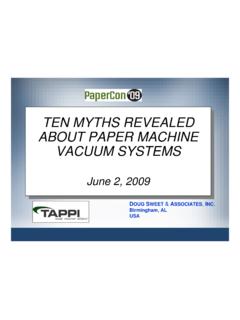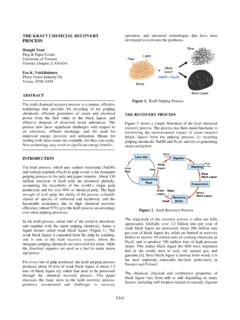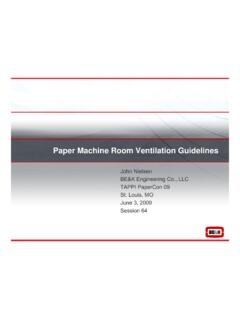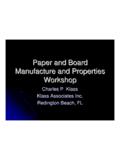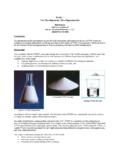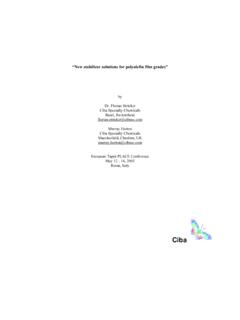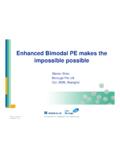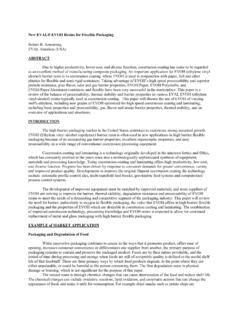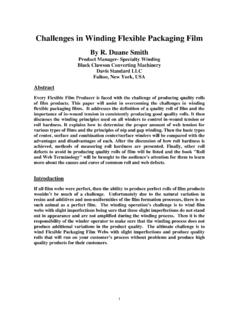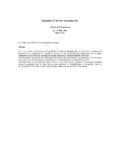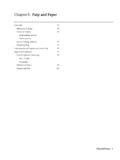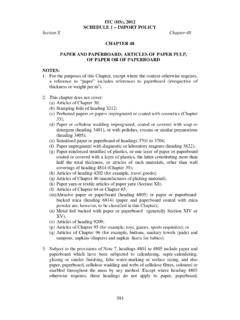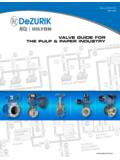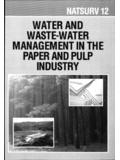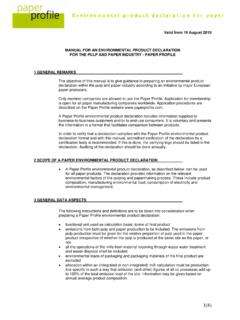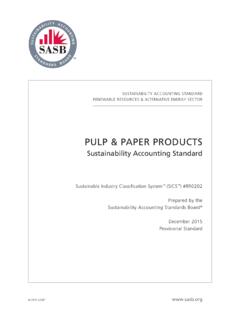Transcription of Standard conditioning and testing atmospheres …
1 NOTICE: This is a DRAFT of a TAPPI Standard in ballot. Although available for public viewing, it is still under TAPPI s copyright and may not be reproduced or distributed without permission of TAPPI. This draft is NOT a currently published TAPPI Standard . WI T 402 DRAFT NO. 2 DATE April 2013 WORKING GROUP CHAIRMAN Janice Trotter SUBJECT Process and Product Quality CATEGORY General RELATED METHODS See Additional Information Approved by the Standard Specific Interest
2 Group for this Test Method TAPPI CAUTION: This Test Method may include safety precautions which are believed to be appropriate at the time of publication of the method. The intent of these is to alert the user of the method to safety issues related to such use. The user is responsible for determining that the safety precautions are complete and are appropriate to their use of the method, and for ensuring that suitable safety practices have not changed since publication of the method. This method may require the use, disposal, or both, of chemicals which may present serious health hazards to humans. Procedures for the handling of such substances are set forth on Material Safety Data Sheets which must be developed by all manufacturers and importers of potentially hazardous chemicals and maintained by all distributors of potentially hazardous chemicals.
3 Prior to the use of this method, the user must determine whether any of the chemicals to be used or disposed of are potentially hazardous and, if so, must follow strictly the procedures specified by both the manufacturer, as well as local, state, and federal authorities for safe use and disposal of these chemicals. Standard conditioning and testing atmospheres for paper , board, pulp handsheets, and related products (Revision of T 402 sp-08) (underscores and strikeouts indicate changes from Draft 1) 1. Scope This Standard practice defines the Standard atmospheres for normal preconditioning, conditioning , and testing of paper and paper products, paperboard, fiberboard, and containers made from them. It also specifies procedures for handling these materials in order that they may reach equilibrium with the respective atmosphere .
4 This Standard practice is also applicable to Standard pulp test handsheets, except that the preconditioning procedure is omitted, that is, the sheets are not dried to conditions below those obtained by exposure to the Standard conditioning and testing atmospheres . (See TAPPI T 205 Forming Handsheets for Physical Tests of pulp . ) This Standard practice does not include special conditioning and testing atmospheres , such as those that attempt to simulate tropical or arctic environments. T 402 sp-08 Standard conditioning and testing atmospheres for / 2 paper , board, pulp handsheets, and related products 2. Significance The physical properties of a sample at 50% RH depend on whether the sample was brought to 50% from higher or lower relative humidities; this humidity hysteresis effect is 5-25% of the test value for many physical properties.
5 For example, a hysteresis effect of 1% moisture content (or 16% of the test value of 6% moisture content) is typical. Preconditioning on the dry side within the range specified will avoid most of the hysteresis effect and result in the moisture content of a given sample being established within when the sample is later conditioned to 50% RH and 23 C. conditioning down to 50% gives most papers a moisture content very nearly the same as conditioning up to 60%. Both temperature and relative humidity have significant effects on the physical properties of paper and board (1, 2). For some properties of paper and board ( , MD tensile and CD stretch) a change of 1 C may have nearly as much effect as a change of 2% RH. For synthetic fibers and plastic laminates, the temperature effect may be greater than the RH effect.
6 3. Standard atmospheres Preconditioning atmosphere , 10-35% RH and 22-40 C (72-104 F) (see Appendix). conditioning atmosphere , RH and C ( F.) testing atmosphere , same as for conditioning . NOTE 1: It is important to distinguish between the overall limits of the temperatures within which conditioning and testing may be carried out and the limits within which the temperature must be maintained in order to maintain the specified relative humidity limits; , the close temperature tolerance of 1 C required in and will not in itself ensure the close relative humidity requirement of 2% RH, as a sudden change of 1 C when at 23 C and 50% RH will change the RH about 3%. 4. Apparatus Preconditioning chamber1, a room or cabinet in which sample sheets or specimens may be individually exposed to circulating air at the preconditioning relative humidity and temperature.
7 NOTE 2: For smaller sheets or specimens, the required preconditioning may be achieved easily with a simple cabinet, if no other means are available. If this cabinet is operated in a room maintained at 50% RH and 23 C and so designed that room air is drawn through it, and if the air entering and in the cabinet is heated to a temperature of 39 1 C ( F), the relative humidity in the cabinet will be at or about 20% RH, which is within the allowed range of 10-30% RH. Commercially available forced-ventilation "ovens" should prove satisfactory. Input air to the oven should be drawn from the Standard room, output should be vented outside of the Standard room. 1 Names of suppliers of testing equipment and materials for this method may be found on the Test Equipment Suppliers list, available as part of the CD or printed set of standards , or on the TAPPI website general standards page.
8 3 / Standard conditioning and testing atmospheres for T 402 sp-08 paper , board, pulp handsheets, and related products For many papers and boards, approximately the same preconditioning moisture content obtained by the above procedure may be achieved by using a sealed cabinet operated in a room maintained at 23 1 C and using a saturated solution of lithium chloride (LiCl) to obtain a relative humidity of about 12-13%. For larger rooms needed for preconditioning sealed containers and large sheets, the required low relative humidity may be achieved by drawing air over a refrigerator expansion coil operating at a few degrees above freezing temperature. conditioning and testing chamber, one or more rooms or cabinets in which sample sheets or specimens may be individually exposed to circulating air at the conditioning relative humidity and temperature and then tested under the same conditions.
9 NOTE 3: The required relative humidity ( ) and temperature ( C) are not easy to achieve, and therefore careful attention must be given to the design, evaluation, and maintenance of the " Standard room." A separate procedure, TAPPI TIP 808-04, has been prepared for this. Hygrometer, any instrument that can indicate directly or indirectly the relative humidity of the air with a calibrated accuracy of RH at 23 C and 50% RH. Thermometer, either the dry bulb of a psychrometer ( , a hygrometer of the wet- and dry-bulb type) or a separate thermometer of any convenient design. If a separate thermometer, it should be graduated to C ( F) or closer with scale errors not exceeding these values. (Psychrometer thermometers must be graduated and correct to C or closer and carefully matched to each other to give the required accuracy and repeatability in the measurement of relative humidity.)
10 Wet-dry bulb psychrometry requires close attention to technique sources of error, purity of water, cleanliness of wick, proper air flow, and in particular the tightness of the wick on the temperature sensor. 5. Procedure Obtain and preserve the sample in accordance with TAPPI T 400 Sampling and Accepting a Single Lot of paper , Paperboard, Containerboard, or Related Product. In particular, avoid exposure of the sample to direct sunlight, to extremes of temperature, and to relative humidities above 65% 58% (see Appendix ). If the sample is to be held for some time before testing , preserve it at a temperature below 25 C (77 F) and relative humidity below 65% 58%, but not below 10% as the paper may curl or cockle and change in other respects. If low temperature storage is used, the sample should be protected against condensation.
